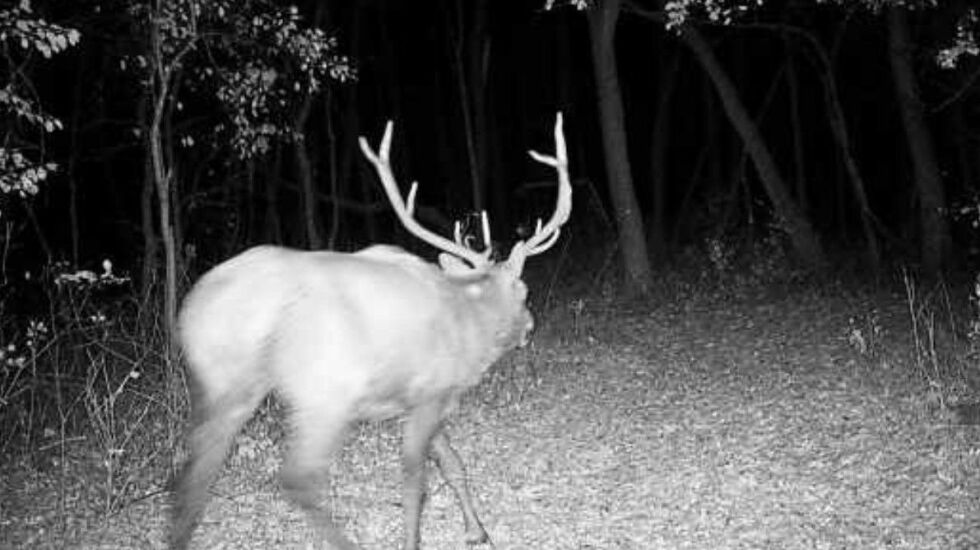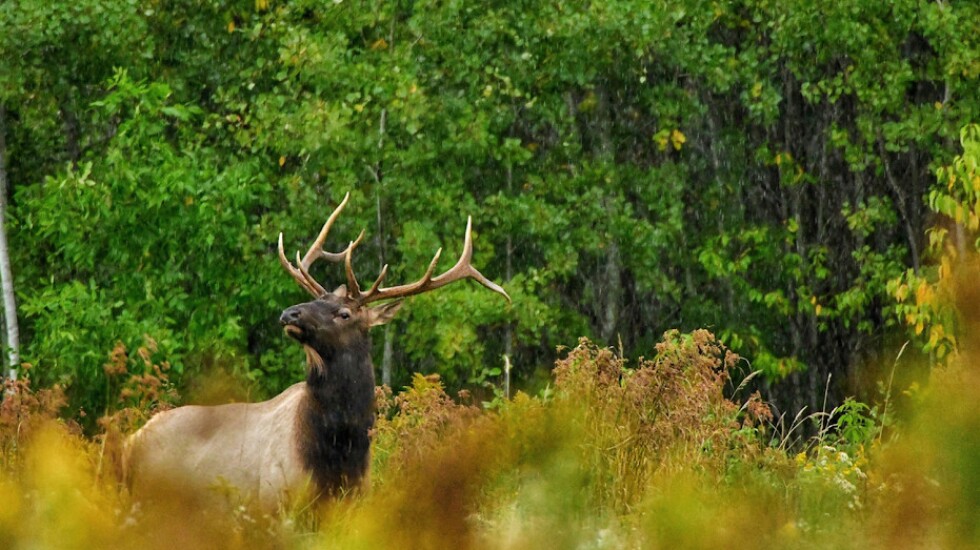
Wild elk graced the Chicago area until about 190 years ago.
At least one was back.
Wednesday morning a wild elk was hit and killed on the southbound side of Interstate 55 near the intersection with I-80 in Joliet, according to Illinois State Police.
Add wild elk to the wild gray wolves, black bears and cougars that have made confirmed appearances in Illinois since 2000 when a wild cougar was hit and killed by a train in Randolph County.
None of the species have established a population, though black bears seem most suited to adapt and establish in Illinois. About 20 years ago the idea of reintroducing elk into the Shawnee area in southern Illinois was explored, then fizzled.
For perspective, Joel Greenberg wrote in his “A Natural History of the Chicago Region” (page 417):
Wapiti (commonly called elk) roamed into the 1830s, but few writers actually observed any. ... Writing in 1855, [Robert] Kennicott stated that several were known to have been shot in Cook County. Captain Levinge left Chicago to embark on a hunting excursion to the grasslands along the Fox River in 1838; he avers that `wapiti are to be found on these prairies, but the chance of getting at them appeared so uncertain, that we returned to Chicago without making the attempt.’
Reintroduction of elk has been successful in Wisconsin, where they were extirpated by the 1880s. Reintroduction began with establishing the Clam Lake Herd in northern Wisconsin in 1995. In 2015-16, the Black River Herd was established with elk from Kentucky.

Statewide, Wisconsin has 515 elk. The Clam Lake Herd is now up to 355. The Black Lake Herd is averaging 80-90% survival to 1 year of its calves. With an increase of about 15% annually, the Black Lake Herd is up to 160.
The bull elk with ear tag 357 came from the Black River Herd, said Christina Kizewski, wildlife biologist for the Wisconsin Department of Natural Resources. It was born in 2020, so it was about 3 1/2-years-old when it was killed. It was a 5x5 (five tines on both main beams) that weighed an estimated 600 pounds, requiring the Illinois Department of Transportation to use heavy equipment to lift its remains.
“That is about normal,” Kizewski said of the young bull’s size.
As a calf, it was captured, then given ear tag 357 and an expandable collar. She said, typically, the collars break after a year and are recovered.
Kizewski gave an explanation for the ramble of bull tagged 357.

“Peak breeding period in Wisconsin is mid to late September,” she said. “Before then, they start staging or vying for a breeding position. If not successful, some stay, but there are transient bulls that move outside of elk-breeding ranges. We do see a handful of transient bulls each fall. They can edge out. At times we see them return to subgroups in winter. This is above and beyond, but we did have one who made it into Missouri a few years ago.”
Bull tagged 357 had a legendary journey, too. Straight line from the Black River Herd to I-55 and I-80 is about 240 miles.
“As a crow flies, yes, but he put on far more miles than the straight line,” Kizewski said.
Bull tagged 357 first traveled in mid-September from the Black River Herd to rural Marathon County before going to the Wausau area, then northwest to Taylor County, then south through Columbia County and to near Madison before moving south into Illinois.
“There was great collaboration between state departments,” Kizewski said.
The first report in Illinois came with a video two weeks ago from near Pecatonica, said Mike Wefer, Illinois DNR wildlife chief. He said a photo came over the weekend of a sighting near Newark in Kendall County. By Wednesday, the excursion of bull tagged 357 was ended.
Because the elk wandered through counties of both Illinois and Wisconsin with known chronic wasting disease in white-tailed deer, the Illinois DNR sent some of the remains to be tested for CWD. The Centers for Disease Control and Prevention describes CWD as “a progressive, fatal disease that affects the brain, spinal cord, and many other tissues of farmed and free-ranging deer, elk, and moose.”
The IDNR is helping the person who recovered the elk with tagging it for processing the meat.
Wefer had already notified the Indiana DNR that the elk appeared headed their way before it was killed.
“It was kind of neat, but sad,” Wefer said. “I was hoping he would go home.”







